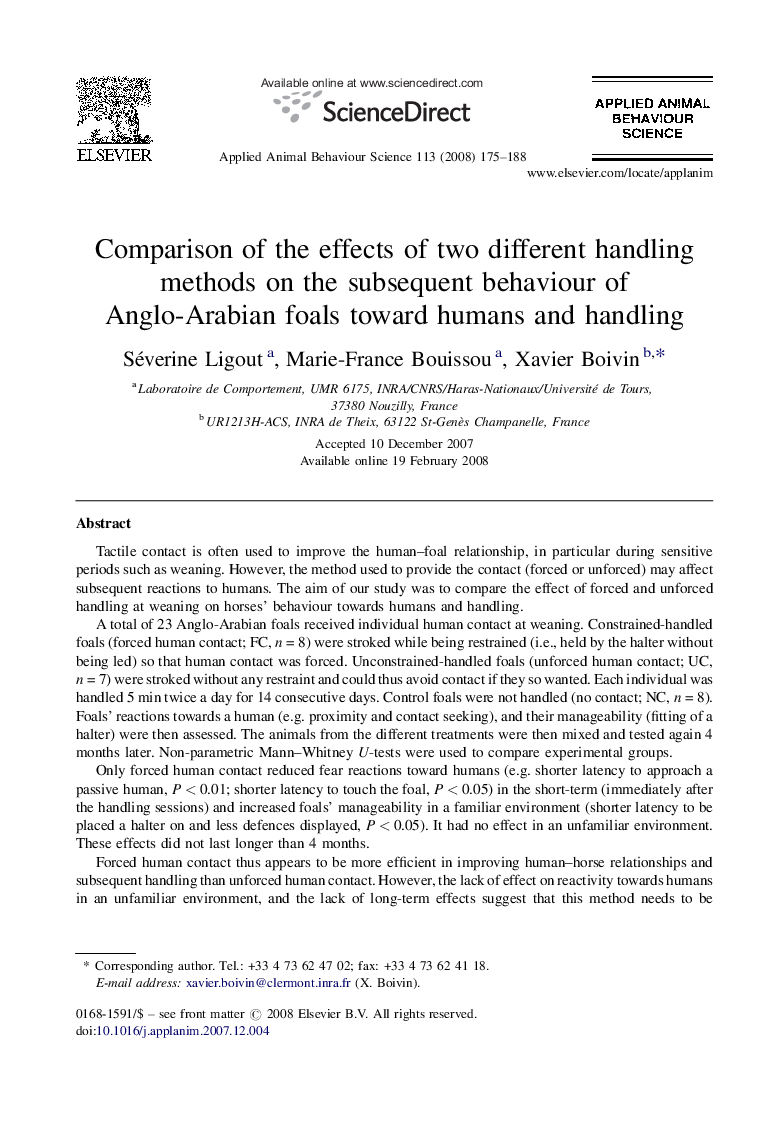| کد مقاله | کد نشریه | سال انتشار | مقاله انگلیسی | نسخه تمام متن |
|---|---|---|---|---|
| 4523621 | 1625419 | 2008 | 14 صفحه PDF | دانلود رایگان |

Tactile contact is often used to improve the human–foal relationship, in particular during sensitive periods such as weaning. However, the method used to provide the contact (forced or unforced) may affect subsequent reactions to humans. The aim of our study was to compare the effect of forced and unforced handling at weaning on horses’ behaviour towards humans and handling.A total of 23 Anglo-Arabian foals received individual human contact at weaning. Constrained-handled foals (forced human contact; FC, n = 8) were stroked while being restrained (i.e., held by the halter without being led) so that human contact was forced. Unconstrained-handled foals (unforced human contact; UC, n = 7) were stroked without any restraint and could thus avoid contact if they so wanted. Each individual was handled 5 min twice a day for 14 consecutive days. Control foals were not handled (no contact; NC, n = 8). Foals’ reactions towards a human (e.g. proximity and contact seeking), and their manageability (fitting of a halter) were then assessed. The animals from the different treatments were then mixed and tested again 4 months later. Non-parametric Mann–Whitney U-tests were used to compare experimental groups.Only forced human contact reduced fear reactions toward humans (e.g. shorter latency to approach a passive human, P < 0.01; shorter latency to touch the foal, P < 0.05) in the short-term (immediately after the handling sessions) and increased foals’ manageability in a familiar environment (shorter latency to be placed a halter on and less defences displayed, P < 0.05). It had no effect in an unfamiliar environment. These effects did not last longer than 4 months.Forced human contact thus appears to be more efficient in improving human–horse relationships and subsequent handling than unforced human contact. However, the lack of effect on reactivity towards humans in an unfamiliar environment, and the lack of long-term effects suggest that this method needs to be improved to be more effective. Some of our results suggest that horses could perceive human contact (i.e., stroking) as positive, however further studies are needed to confirm this hypothesis.
Journal: Applied Animal Behaviour Science - Volume 113, Issues 1–3, September 2008, Pages 175–188